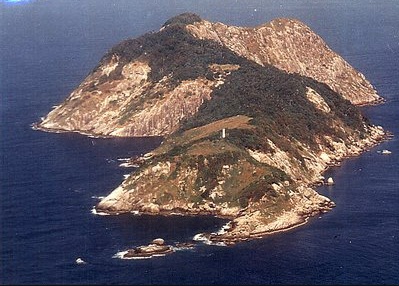Snake Island

February 18, 2022
Ilha da Queimada Grande, also known as Snake Island, lies just off the coast of São Paulo. At only 106 acres, it is one of the smallest islands located in the Atlantic Ocean. However, do not misinterpret its dainty size for paradise; Snake island, as the name suggests, is home to over 2,000 deadly, pain-inflicting vipers.
Up until the 1920s, few people lived on the island but only to maintain the lighthouse. According to a local tale, the lighthouse keeper died when a pit of snakes slithered through the windows of his home, completely killing him and his family. Another tale suggests that thousands of years ago, pirates physically released thousands of snakes onto the island to protect its gold and riches. In reality, the large population of snakes is attributed to thousands of years of snake evolution, free from human interference and destruction. However, today the Brazilian government has strictly deemed the island illegal to the public, only allowing research teams to collect samples when needed.
With venom three to five times stronger than any typical venomous snake, these Golden Lancehead vipers will effortlessly kill a grown man in just under an hour. With nearest hospitals hundreds of miles away, the chance of survival is little to none, which is why the Brazilian government has required researchers to be accompanied by a doctor, in the case someone is bitten by these deadly vipers.
“Locals’ claim of one to five snakes per square meter is an exaggeration, though perhaps not by much. One snake per square meter is more like it. Not that that should ease one’s mind; At one snake per meter, you’re never more than three feet away from death,” says biologist Marcelo Durate in an Atlas Obscura article.
However, these startling facts do not seem to bother wildlife smugglers. Lanceheads have been smuggled and sold on the black market from anywhere between $10,000-$30,000. Ultimately, it is their potent venom that is deeply coveted.
“The golden lancehead’s venom has already shown promise in helping with heart disease, circulation, and blood clots. Snake venom from other species has also shown potential as an anti-cancer drug,” stated biologist Marcelo Duarte in a Smithsonian article.
Unfortunately, over the last decade, the island’s snake population has diminished by over 50%. Due to habitat degradation from researchers and disease, the Golden lancehead is critically endangered.
While their decreasing numbers may provide relief for humans, venom from these majestic snakes are the future of medicinal practices. It is crucial that the prevention of their extinction is taken with serious intent, without their valuable and unique venom, the future of medicine is looking grim.
Photo Courtesy of WIKIMEDIACOMMONS
